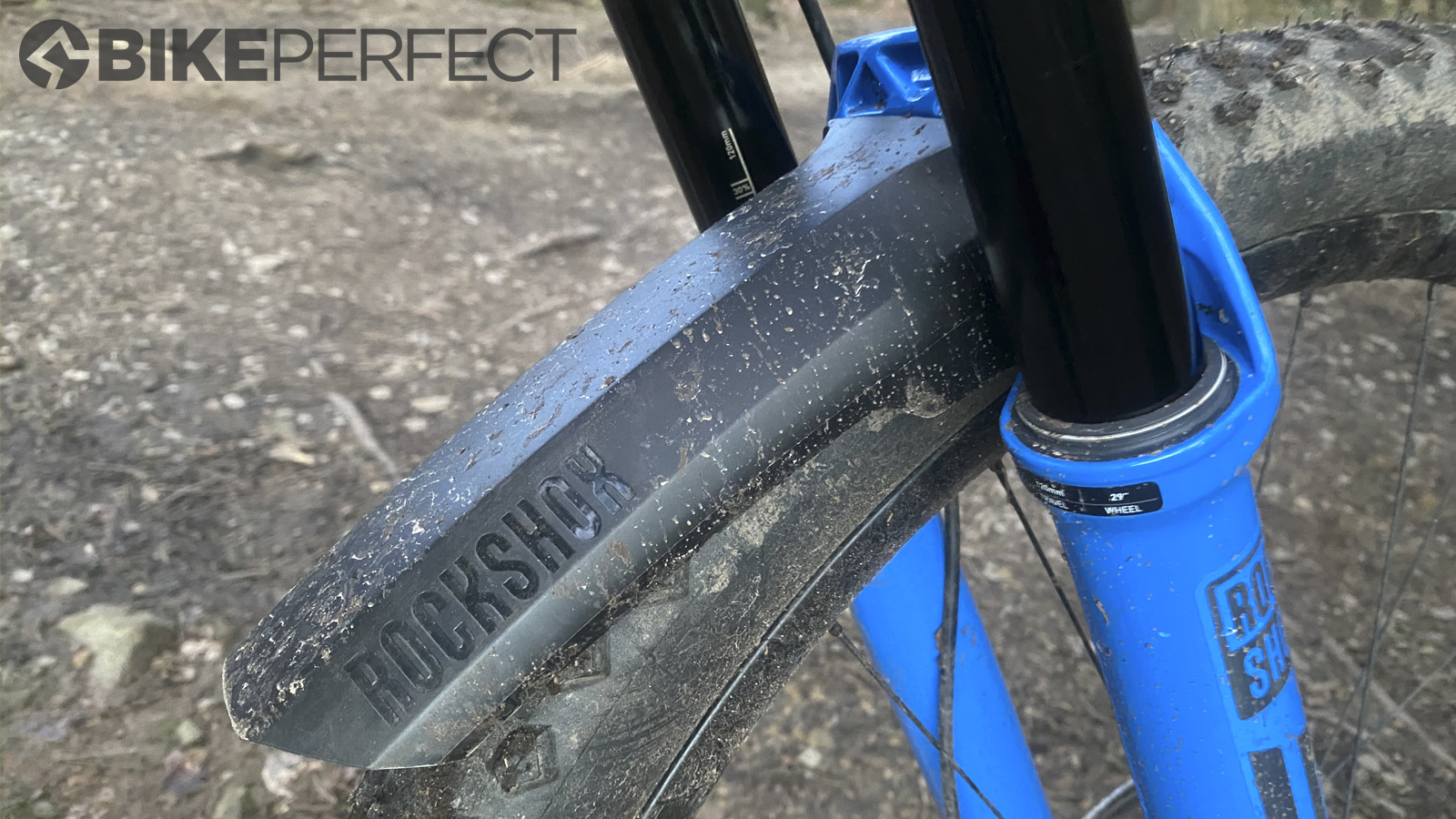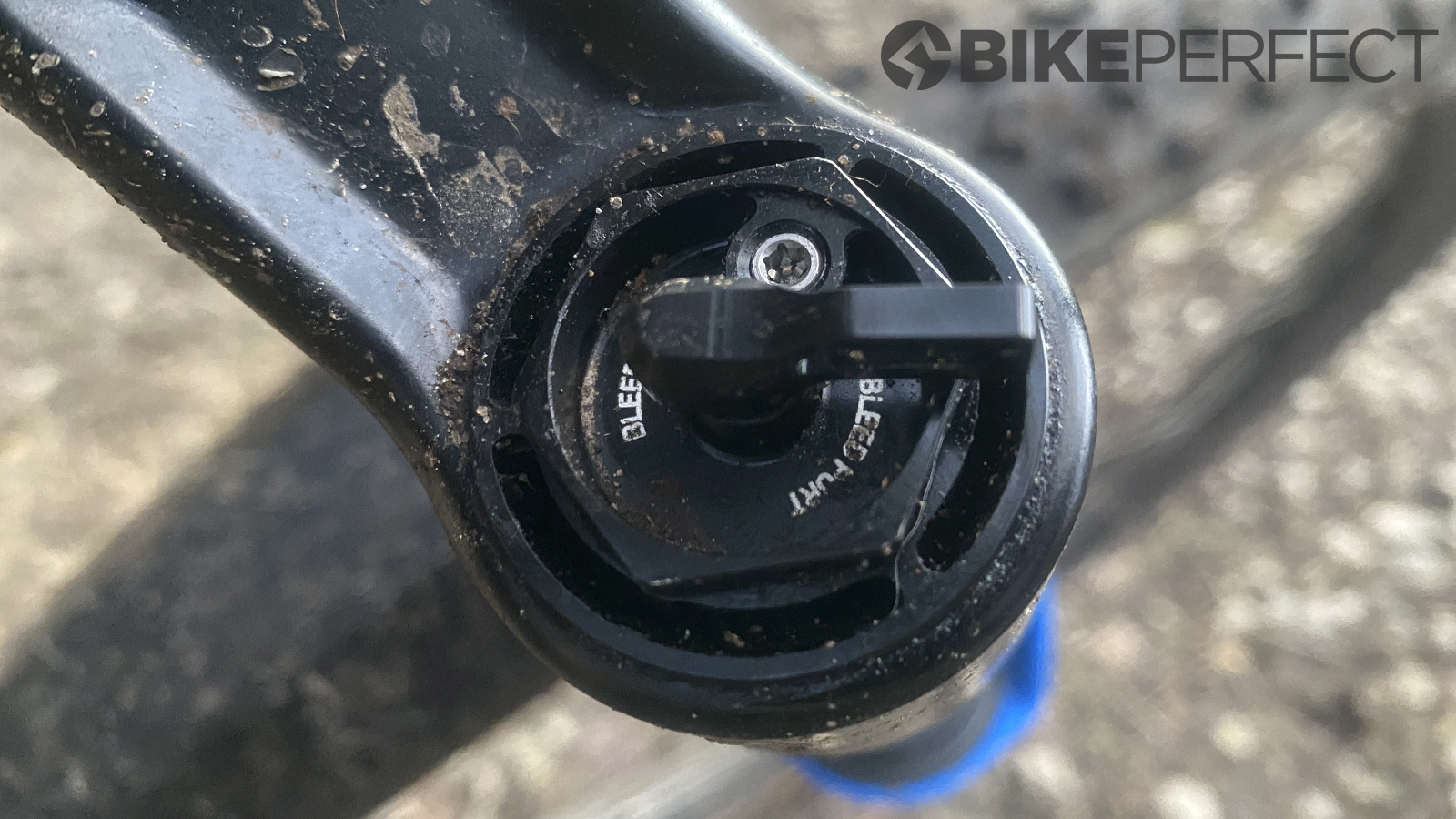Bike Perfect Verdict
Faster in every way, the RockShox SID Ultimate is the outstanding new benchmark for rad XC/super-light trail speed
Pros
- +
Ultra-lightweight but still acceptably accurate with predictable tracking
- +
Superb traction but still supportive when you’re rallying hard
- +
180mm rotor and 2.4in tyre compatible with a proper fender
- +
Premium SKF seals and Maxima Plus fluid
- +
Fork top or twist remote lockout for sprinting
Cons
- -
Lack of compression fine-tuning on Ultimate
- -
Only available in 44mm offset 29er sizes
Why trust BikePerfect
RockShox SID (Superlight Integrated Design) has won more significant race victories than any other lightweight XC race fork for over two decades. However, for the past few years, it’s struggled to compete against Fox’s 32SC and 34SC forks in terms of weight, control or both. That’s been totally flipped round by the latest SID Ultimate though. A completely new fork that delivers impressive flat-out trail control and practical features at a proper race freak weight. There are some sizing and adjustability sacrifices worth being aware of though.
Construction
Both SID SL and SID get a whole new chassis but while the 1326g (RockShox weight) 100mm travel SL stays on 32mm legs, the 120mm travel SID gets internally tapered 35mm stanchions. That’s the same width (but not the same wall thickness) as the Pike trail fork and Lyrik/Yari enduro forks. Unlike Fox’s cutaway Step Cast forks, the lower legs are a full tube from the heavily sculpted Maxle 15mm dropouts upwards, although the internals are recessed a long way up inside.
Those internals are lightened significantly too. A new Charger Race Day damper with reduced oil volume and overall size sees a reduction of over 90g compared to the previous SID damper, and over 100g compared to the equivalent Charger RL damper in Pike (and SID Select +). External compression damping is limited to a tiny lockout lever although a remote twist-grip lockout lever is available, too. Rebound is adjusted with a tiny Allen key that can be clicked out of the recessed lower leg position to save a few more grams and/or tune the lever-free adjusters of the matching SIDLuxe rear shock.
While the SID’s DebonAir spring uses the same grey volume spacers as Pike, the pressure-equalising, air piston bypass ‘dimple’ has been reshaped and moved so it works at top-out, not 1cm into the stroke. That way it closes off the positive spring earlier in the stroke and keeps ride height proportionately higher than RockShox trail forks. The top out bumper and the cup it sits in have been reshaped too which gives a slightly different feel at full extension.
Structurally, the seal head bulge is shorter and the crown thinner and lighter than Pike too. Add a sloping shouldered, anodised (paint is heavy) and machined crown, heavily cutaway/recessed top caps and even a lightened top cap, and our test fork came in at 1508g once cut to fit (190mm steerer). That’s 160g lighter than the 120mm travel Fox 34SC that we tested alongside it and around 440g (basically a full pound) lighter than Pike Ultimate. The new SID SL is also 166g lighter than the previous SID Ultimate Carbon, even though RockShox has dropped the composite crown and steerer for the new generation forks.

You can get your SID Ultimate in blue or black, and SID Select+ with a Charger RL damper (£749, €839, $769) in plain black. Both forks come with a neat bolt-on plastic fender to reduce spray on wetter days and they’ll take a 2.4in tyre with room to spare. The brake mount is a direct fit for a 180mm rotor - further proving it’s a proper aggro XC fork.
RockShox has stripped the sizing options back, which won’t suit everyone. While SID SL comes in 100mm and SID in 120mm they’re both only in a 29er wheel size with a short 44mm offset. That’s because RockShox sees that as the way all race bikes are going now, but the shorter offset will make your bike feel more stable, but lighter at the bar if you’re used to a 51mm fork.
Performance
The lack of a carbon steerer means no need for a carbon bung so set up is totally straightforward. The only thing to be aware of is that the air pressure guide on the fork leg of our sample (and others we checked) is just a generic RockShox one shared with Pike. That put recommended pressures about 15psi too low (we should have been running 68psi, but ended up at 83psi) and seriously saggy. The ‘Trailhead’ tuning app should have more accurate numbers once it’s updated for the official fork release though.
Once you’ve got sag about right (we ran around 15-20 per cent), the new transfer port position and aggressive progression of the fork keeps it riding consistently high so you’ve always got something in reserve if you really slam out. In fact, we only ever got within 10mm of full travel a couple of times (one was an over the bar into a ditch in the dark) when riding, although, you can crush it to within 3mm if you let all the air out so the travel is theoretically there. The 120mm fork comes without any ‘Bottomless Token’ volume spacers installed but two are included in the box, so there’s the option to make it even more progressive and run lower sag if you want. We tried an extra token and soon went back to fully open though, which of course keeps the fork fractionally lighter too (tokens are 15g each).
That’s because the standard stroke is pretty much perfect for its intended purpose. The smaller pistons and seals in the Charger Race Day damper, plus new ultra-low-friction SKF seals and Maxima Plush suspension fluid make it incredibly supple off the top. Add a bit of structural flex to take the nose off squarer rock edges, and traction and momentum - even at stalling point speeds on technical climbs - is phenomenal. Minimal weight means physically popping the fork up and over stuff is noticeably easier too. The fact you’re likely teaming it with a lighter wheel reduces the unsprung to sprung weight ratio to boost sensitivity even further. That means the whole fork feels alive and inspiringly helpful, grabbing grip and flowing over every crux section, even when the rest of your body is screaming on extended tech climbs.
If you need to lock it out, then the fork top lever is just big enough to hit and it’s lightly spring-loaded so it’ll flick round itself with the lightest of taps. It is a proper, fully rigid lockout though, so if you want more an incremental stiffening option on your SID, you need to go for the SID Select+ with Charger RC damper.

That same ultra-sensitive traction and slight compliance in the fork means excellent cornering grip once the pace and aggression picks up too. If you match it to a really flexy lightweight front wheel then things are definitely vague but pick a sharp wheel - preferably with oversized RockShox Torque Cap axle ends to match the dropouts - and it’s acceptably accurate even if you’re coming off big forks. A quick between-the-knees twist test showed similar levels of rotational stiffness to Fox’s 34SC and that’s how it felt on the trail too (despite being 160g lighter).
The structural compliance is also very progressive - similar to a good steel frame - so it loads and unloads smoothly into and out of corners, rather than getting bunched up and suddenly freaking out. That meant after just a few minutes on SID, we were actually using the extra grip to turn in tighter than we normally would even in random rocky terrain. The deflection and spring also meant less arm pump on longer descents than we typically get with stiffer forks and heavier tyres.
While Fox has always had a control edge on shorter-travel forks, the damping from the miniature Charger Race Day unit is impeccable too. Watching playback on video, you can see the fork working constantly to keep the tyre on the ground and tracking, but the amount of mid-stroke used most of the time is remarkably small. That chimes with the consistent riding sensation that this was a full-sized trail fork using all of its travel only to find the red travel marker still had plenty of reserve at the end of the run.
Even big nose dives or flat landings don’t create the normal stomach-churning flex and ricochet you normally get from super light forks, and it never noticeably deviated when we were working the 180mm brake hard. Basically this fork is that irrepressible trail buddy who never stops smiling or looking over their shoulder going “Come on, you’ve got this, you can go faster” whether you’re climbing at the red line, carving corners or heading into serious geology.
There were a couple of times when we might have felt the minimal volume damper getting a little hot and loose but it may have just been us getting giddy. Either way, we ended up dialling in a little more rebound than normal to keep it settled on longer descents or when we knew we’d be attacking rough trails full gas for extended periods. There was never any question of us backing off the attack though and you’re going to need a really well set up 100-120mm back end if it’s not going to hold the rest of the bike back compared to the SID.
Verdict
It’s been a long time coming but RockShox’s new SID totally resets the XC/superfast trail/downcountry fork benchmark. It’s stiff enough to rally hard but compliant enough to add traction and reduce fatigue when you’re at your limit. The suspension is ultra-smooth for initial grip, yet solidly supportive through neck-straining berms and unfazed by serious slams. It’s significantly lighter than anything that comes close in terms of overall control so it climbs and sprints like a champ. It’s still a practical everyday fork with a fender, proper tyre clearance and super-easy servicing.
The only potential issues are the wayward setup pressure guide and a lack of external compression tuning for some racers who might find the DebonAir spring too plush for their masochistic tendencies. You’re also restricted to one size option too, but if it fits and you want to go flat-out faster, then new SID does it better than anything else available.
Tech spec: Rock Shox SID Ultimate
- Travel: 120mm
- Adjustment: Lockout, threshold, rebound.
- Weight: 1508g (29er 190mm cut steerer with axle, without fender
- Price: £949, €1059, $969

Guy Kesteven has been working on Bike Perfect since its launch in 2019. He started writing and testing for bike mags in 1996. Since then he’s written several million words about several thousand test bikes and a ridiculous amount of riding gear. He’s also penned a handful of bike-related books and he reviews MTBs over on YouTube.
Current rides: Cervelo ZFS-5, Specialized Chisel, custom Nicolai enduro tandem, Landescape/Swallow custom gravel tandem
Height: 180cm
Weight: 69kg

